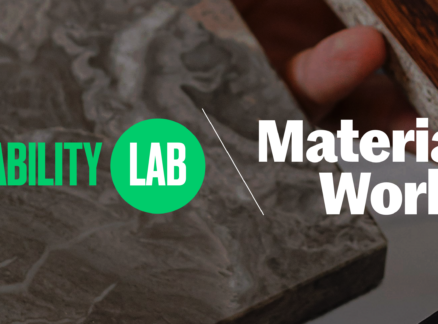September 1, 2006
Design Without Borders
North American businesses team with artisans abroad and demonstrate that commerce can be philanthropic.
We intuitively take aesthetics, price, and function into consideration when specifying a product, but social and ethical considerations should be equally important. Culturally we have begun to reject sweatshop and child labor and regard architecture as a humanitarian tool. So a trend at this year’s New York International Contemporary Furniture Fair (ICFF) was particularly encouraging: collaborations between companies and designers such as Artecnica, 3form, Stephanie Odegard, Patty Johnson, and Rosemary Hallgarten—and traditional artisans. “I’m very encouraged by this as it demonstrates the interest of our consumers in not only wanting to have a handmade environmentally sustainable product but in gaining respect and appreciation for other cultures,” says Stephanie Odegard, president of Odegard Inc., one of the companies leading the way in providing ethical guidelines for the carpet industry. “This ultimately benefits not only the poor who are producing the products by providing much needed income, but it enhances the lives of those that purchase the products, thus bringing our cultures closer together.”
—Kristi Cameron and Paul Makovsky
**
Tord Boontje: Brazil
“Design was born out of craft,” says Enrico Bressan, codirector of the Los Angeles–based manufacturer Artecnica. It’s a bond that the company has been reinvigorating with its Design with Conscience campaign, which puts high-profile international talents in touch with local craftspeople in developing countries. The project began in 2004, when Artecnica paired husband-and-wife team Tord Boontje and Emma Woffenden with glassmakers in Guatemala to produce the TranSglass collection of vases, cups, and jugs from recycled wine and beer bottles. Shortly afterward the company forged a collaboration with Hella Jongerius and Aid to Artisans in Peru. Jongerius’s four-piece
collection, mixing black ceramics and pink beadwork, was two years in the making and won an Editors Award at ICFF in May. Not content to rest on its laurels, Artecnica is already working on a new project through Aid to Artisans, connecting Stephen Burks with craftspeople in Peru and South Africa; the resulting collection will debut at the New York International Gift Fair in January.
Ultimately the campaign is not just about creating products with an interesting backstory. “We get a product we can be proud of,” Bressan says. “But at the same time we have to create the economics where
we can give back to the designers and to the craftspeople.”
—Mason Currey
**
Hella Jongerius: Peru
Artecnica’s ICFF booth—devoted to the company’s Design with Conscience campaign—featured the TranSglass collection, produced by glassmakers in Guatemala; the Come Rain Come Shine chandelier, made by women at the Coopa-Roca cooperative in Rio de Janeiro; and the Beads & Pieces bowls and vase, made by artisans in Peru.
**
Patty Johnson: Botswana
Peter Mabeo, an enterprising furniture manufacturer in Botswana, approached Toronto-based designer Patty Johnson after viewing her work at the ICFF in 2004. Like all long-distance relationships, the collaboration wasn’t without challenges. “I spent a lot of the last two years on planes,” she says. The rewards—aside from the accrual of frequent-flier miles—validated the logistical hurdles. Their ten-piece wooden furniture collection won the Editors Award for craftsmanship when it was unveiled at this year’s Furniture Fair.
Encouraged by the success of her first far-flung partnership, Johnson founded the North South Project (www.northsouthproject.com) in 2005 to fill the gap left by many organizations trying to build industries in developing countries. “[They] often default to crude handicraft products or the creation of branch plants that don’t reflect the culture of these places,” she says. Instead Johnson creates products that are viable for the North American market and highlight the individual skills and local aesthetics of the craftspeople. Having already forged relationships with the Wai Wai tribe in Guyana and the Etsha weavers in Botswana, Johnson is currently planning a new line in India.
No matter where the project takes her, Johnson remains committed to Mabeo; the two intend to launch another collection at ICFF next year. “As a client Peter really worked at trying to understand what I wanted and didn’t make any compromises,” she says. “It was just an amazing thing for me as a designer.”
—Belinda Lanks
**
3Form: South Africa
A desire to seek out new materials and collaborators led Utah-based 3form to Africa in 2005. The manufacturer joined design forces with women affected by HIV and AIDS in South Africa, pairing their own environmentally friendly EcoResin with the local artisans’ intricately woven design of wire and beads to produce Ithemba (“hope” to native Xhosa speakers)—a seamless juxtaposition of traditional craft with modern industry. “Ten years ago if you were to do something to give back like this you would suffer in terms of design,” Jill Canales, 3form’s vice president of design, says of the changing altruistic marketplace. “Today [clients] see that they can have it all.”
—Rebecca Veit
**
Stephanie Odegard: Nepal
Rosemary Hallgarten: Peru
The rug industry is rich with collaborations between designers and artisans, like those practiced ethically by Rosemary Hallgarten and Stephanie Odegard. “It was always my intention to work with artisans to keep the traditions they have alive and give people work they otherwise wouldn’t have,” says Hallgarten, who began collaborating with a few craftspeople she met at a market while traveling in Peru. Since introducing their organic alpaca rugs to the U.S. market, she has expanded the business to include 20 people by teaching other Peruvians these traditional techniques. Last year Hallgarten began working with artisans in Nepal to produce more finely knotted designs from cashmere, canvas, hemp, and other unconventional rug materials. Odegard, who visited Nepal in 1986 on behalf of the World Bank, has not only helped shape the industry there to benefit locals but built a multimillion-dollar business of her own working with Tibetan carpet makers. “First we study their craft, art, and culture,” she explains. “Then we try to build on that and utilize our market knowledge to enhance what they are doing in a modern way.”
—Kristi Cameron





